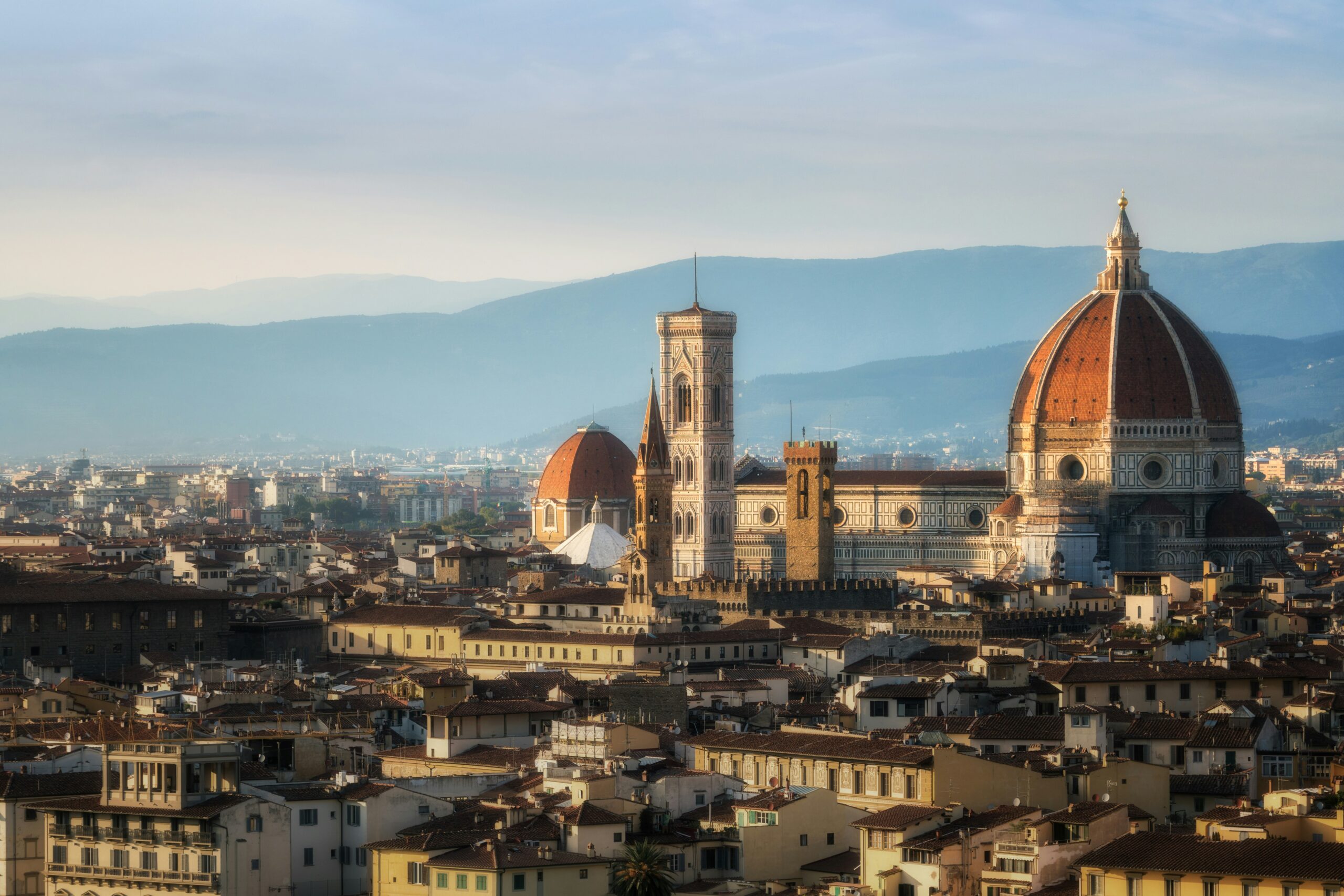What Defines Renaissance Architecture?
Key Features of Renaissance Architecture:
- Domes inspired by ancient Roman techniques, such as the iconic dome of Florence Cathedral by Filippo Brunelleschi.
- Columns and Pilasters derived from classical orders (Doric, Ionic, Corinthian).
- Arches, often semi-circular, used for both structural support and aesthetic appeal.
- Symmetry in layouts, façades, and room proportions.
- Ornamentation that adhered to mathematical precision.
Below is a comparison between Gothic and Renaissance architecture to provide a clearer perspective:
| Category | Gothic Architecture | Renaissance Architecture |
|---|---|---|
| Time Period | 12th–16th Century | 14th–17th Century |
| Key Inspiration | Medieval Themes | Classical Greece & Rome |
| Design Focus | Verticality & Light | Symmetry & Proportion |
| Structures | Cathedrals, Churches | Churches, Palaces, Villas |
| Arches | Pointed Arches | Semi-circular Arches |
| Windows | Stained Glass | Smaller Decorative Windows |
| Domes | Rare | Prominent (e.g. St. Peter’s Basilica Dome) |
| Examples | Notre Dame Cathedral | Florence Cathedral, The Vatican |
Famous Architects and Their Contributions
The innovations of the Renaissance were driven by groundbreaking architects whose work has continued to inspire modern designs. Here are three key figures:
1. Filippo Brunelleschi
Often hailed as the father of Renaissance architecture, Brunelleschi is best known for his design of the dome of the Florence Cathedral. His use of linear perspective revolutionized architectural design.
2. Leon Battista Alberti
Alberti emphasized the theoretical aspects of architecture, codifying his ideas in the influential treatise De Re Aedificatoria. His works, such as the façade of the Santa Maria Novella, exemplify classical harmony.
3. Andrea Palladio
Palladio’s villas, inspired by Roman temples, became the epitome of Renaissance residential designs. His book I Quattro Libri dell’Architettura (“The Four Books of Architecture”) remains a foundational text for architects.
Actionable Tips for Integrating Renaissance Design Today
While we may not all be building cathedrals, the principles of Renaissance architecture can inspire contemporary projects. Here’s how you can apply them:
1. Use Symmetry
Focus on balanced proportions in layouts or façades. Even in interior design, symmetry creates harmony.
2. Incorporate Classical Elements
Consider adding features like pilasters, arches, or columns to your home or garden spaces.
3. Highlight Natural Light
Include large windows or cleverly placed skylights to bring in soft, natural light—an intrinsic element in Renaissance design.
4. Stick to Neutral Tones
Earthy hues and muted pastels inspired by nature work wonderfully to create a timeless look.
5. Stay Inspired
Visit architectural landmarks or explore texts like Palladio’s Four Books on Architecture for fresh ideas.
What Can We Learn from Renaissance Architecture?
Renaissance architecture shows us the power of blending tradition with innovation. Its revival of classical design principles, obsession with detail, and vision for functionality have shaped countless styles and movements since. By studying these masterpieces, architects, designers, and enthusiasts can find ways to innovate while preserving timeless beauty.
Interested in further exploring Renaissance design? Check out these resources for in-depth readings and virtual tours.




Leave a Reply